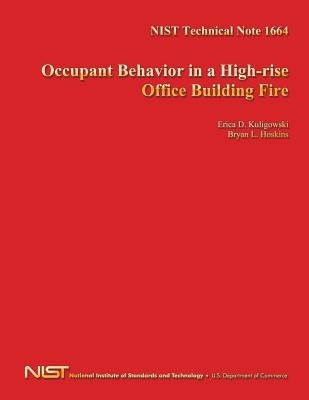
- We will send in 10–14 business days.
- Author: U S Department of Commerce
- Publisher: CreateSpace Independent Publishing Platform
- ISBN-10: 1495992691
- ISBN-13: 9781495992698
- Format: 21.6 x 28 x 0.2 cm, softcover
- Language: English
- SAVE -10% with code: EXTRA
Reviews
Description
The level of safety that a building affords occupants during a fire is determined in one of two ways: 1) the use of prescriptive codes and 2) the use of performance-based codes or design. In the first case, an engineer consults a set of building and/or fire codes to ensure that the building has the required number and width of exits, appropriate number and spacing of suppression and detection systems, etc. However, very few of these regulations are based on a scientific understanding of how occupants will use the building and take action during an emergency (i.e., occupant behavior). In the second case, an engineer determines whether the time when untenable conditions develop in the building (ASET or available safe egress time) exceeds the time needed for occupants to evacuate the building or a portion of the building (RSET or required safe egress time). Engineers use tools ranging in sophistication from back-of-the-envelope evacuation calculations to computer-based evacuation simulation models. However, due to a lack of data on occupant behavior during fire emergencies, these tools often simplify each evacuation scenario such that occupant behavior is mostly ignored and only the time required for occupant movement is accounted for.
EXTRA 10 % discount with code: EXTRA
The promotion ends in 19d.16:14:29
The discount code is valid when purchasing from 10 €. Discounts do not stack.
- Author: U S Department of Commerce
- Publisher: CreateSpace Independent Publishing Platform
- ISBN-10: 1495992691
- ISBN-13: 9781495992698
- Format: 21.6 x 28 x 0.2 cm, softcover
- Language: English English
The level of safety that a building affords occupants during a fire is determined in one of two ways: 1) the use of prescriptive codes and 2) the use of performance-based codes or design. In the first case, an engineer consults a set of building and/or fire codes to ensure that the building has the required number and width of exits, appropriate number and spacing of suppression and detection systems, etc. However, very few of these regulations are based on a scientific understanding of how occupants will use the building and take action during an emergency (i.e., occupant behavior). In the second case, an engineer determines whether the time when untenable conditions develop in the building (ASET or available safe egress time) exceeds the time needed for occupants to evacuate the building or a portion of the building (RSET or required safe egress time). Engineers use tools ranging in sophistication from back-of-the-envelope evacuation calculations to computer-based evacuation simulation models. However, due to a lack of data on occupant behavior during fire emergencies, these tools often simplify each evacuation scenario such that occupant behavior is mostly ignored and only the time required for occupant movement is accounted for.


Reviews